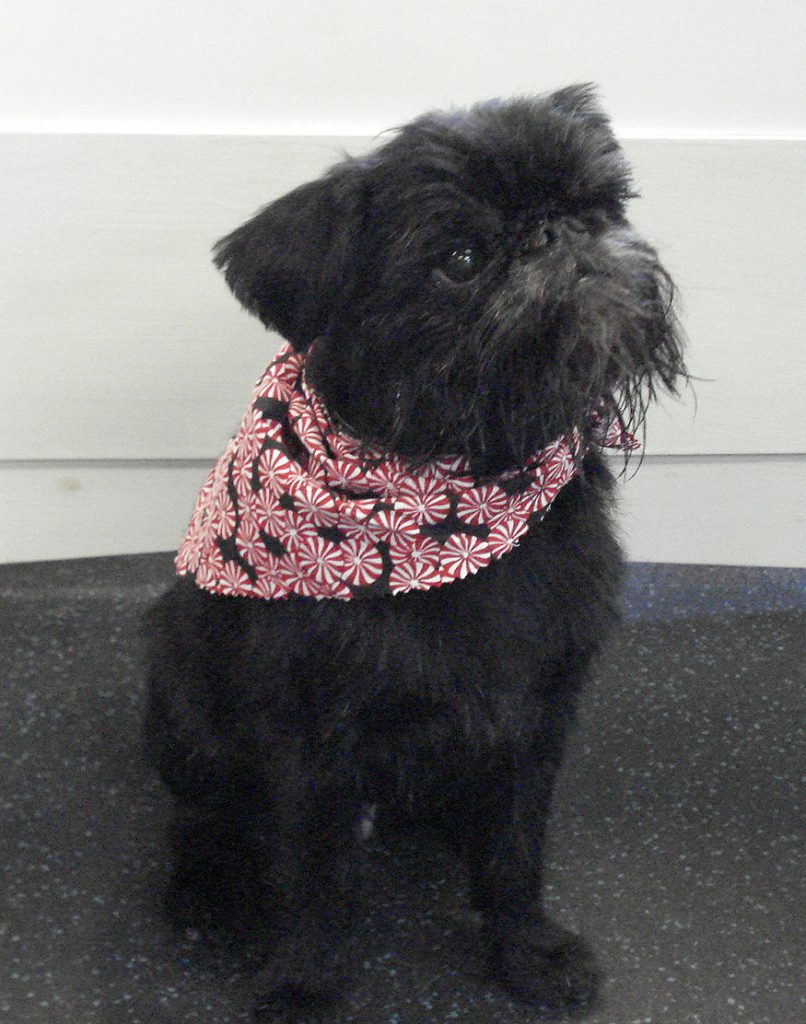Is your dog scared of strangers?
Either out and about or at home?
Does he/she “go ballistic” whenever the doorbell rings? Have you stopped inviting people over because it’s just too stressful? When repairs are needed do you have to lock your little dog away?
Most of the “aggressive” behaviors small dogs display are rooted in fear. It’s the dog saying to the world, “I’m tough and I’ll hurt you before you hurt me!”
Warning – danger approaching!
Small dogs know their size. And many of them aren’t particularly confident. They’ll bark and lunge, hoping the display will be enough to keep others away so they’ll be safe. And many owners react by indulging the behavior, either soothing their dogs with a comforting “you’re okay! It’s fine!” or by picking them up to remove the threat.
Many dogs will try to hide behind their owners for protection, then lunge out when they feel a threat. Some trainers encourage dogs to sit between owners feet as a “safe place,” but it can work in reverse if the dog thinks you’re acting as his “back up.”
We feel your pain – Tango was scared of strangers
Our own experience with aggressive dogs is first hand. Unfortunately, Fran’s Tango was a lunging, snapping maniac when she got him. He was fear aggressive and extremely scared of strangers. She had no hint – their instant connection meant she could do anything with him from the moment they met. No one else could get near him – including Hope!

It took time and patience to bring out the best in Tango. He became a dog Fran could take places and compete with in Agility and Rally. There were times we thought it would never happen.
And there are some people who prefer their small dogs to stay aggressive to the rest of the world. We know one woman who firmly believes her Chihuahua’s snarling and snapping keeps both of them safer. And if that’s where you’re at, that’s fine.
Turn it around
But if you want your dog to be a welcome guest and companion, there are simple things you can do to turn things around.
If, like Fran, you’re able to do anything with your dog, you’ll need to enlist an understanding friend to help.
You’ll need some absolutely irresistible treats. Use something smelly, like pieces of hot dogs. And, with your dog on collar or harness and leash, have your helper drop treats in front of the dog. Be sure you’re far enough away that the dog can’t reach your friend. If necessary, the treats can be gently tossed on the ground.
If your dog is nicer than Tango was, your friend put a treat in an open hand and offer it to the dog. Tango would bite, so that wasn’t an option.
Repeat 10 times – 10 treats.
That’s it. The friend shouldn’t try to engage with the dog at all – don’t meet his/her eyes, don’t talk to the dog, nothing. Especially don’t lean over! As tempting as it is to bend over to look at, or pet, a dog, to the dog it’s a threat. Either stay standing, or, even better, have your friend sit on the floor and toss the treats where the dog can reach them. Remember to stay out of range to keep everyone safe!
This sets up the idea, in the dog’s mind, that this person is not threatening, doesn’t want anything from me, and just wants to give me treats. Maybe, just maybe, I’ll like this person!
Enlist some help
The next time you try, maybe your dog will have a more relaxed posture. Maybe he/she will actually seem happy to see your friend. As time goes by, your friend will be able to hand the dog a treat.
And that’s the key. Over time, there were many friends of ours who became “cookie ladies!” Fran packed lots of treats whenever she went out with Tango, and handed a few to whoever she saw. Over just a couple of months, Tango became a dog Fran could take anywhere. He expects strangers to be treat dispensers, not dangers.
When you have a dog that’s fear-aggressive, one eye should always be on him/her, to make sure everyone will be safe. Time, patience, and “cookie people” can help fix the problem, but it may never be cured.
What works for you?
Have you had a reactive, or fear-aggressive dog? Is he/she scared of strangers? What works for you to help your dog cope with the world a little better?











